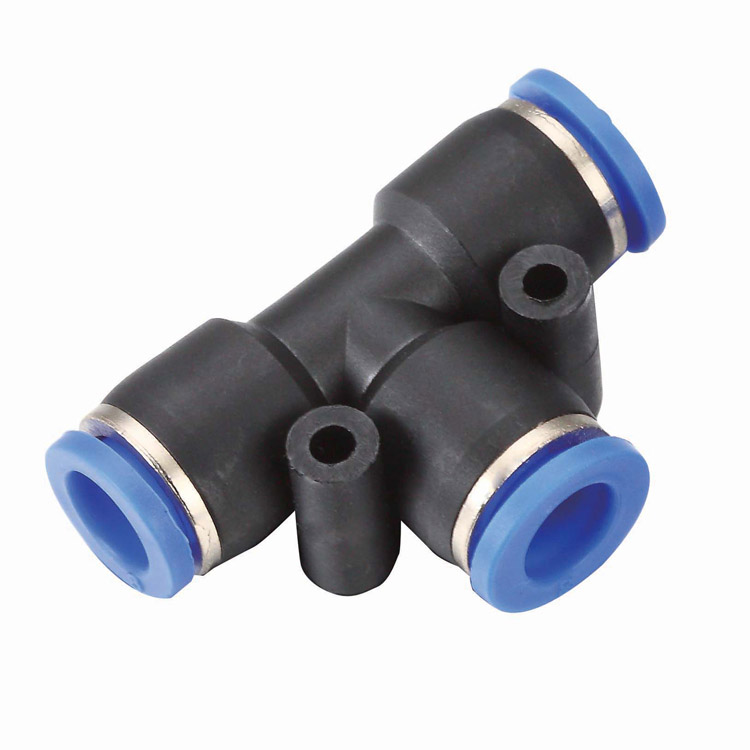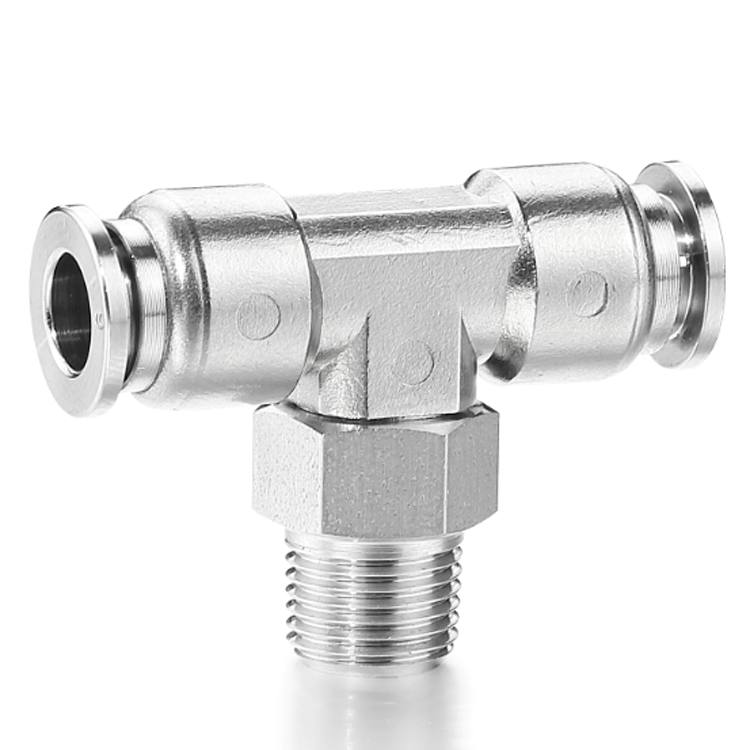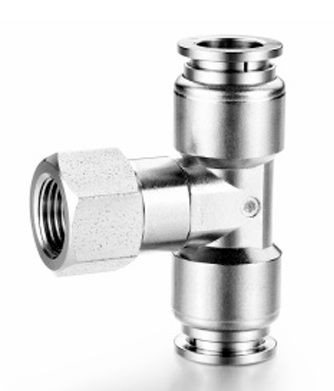Table of Contents
ToggleI. Introduction
In the realm of pneumatic systems, air fittings play a pivotal role in ensuring efficient and reliable operation. These components are essential for connecting various parts of a pneumatic system, allowing for the seamless transfer of compressed air. Among the various types of air fittings available, push to connect technology is revolutionizing industrial connections. This innovative approach simplifies the process of connecting and disconnecting pneumatic lines, significantly enhancing operational efficiency and reducing downtime. In this comprehensive guide, we will explore the intricacies of push to connect air fittings, their applications, advantages, and how to choose the right fittings for your industrial needs.
II. What are Push to Connect Air Fittings Used For?
Push to connect air fittings are utilized across a wide array of industrial applications, making them indispensable in modern manufacturing environments. Key industries that benefit from this technology include:
- Manufacturing: In assembly lines, where speed and efficiency are paramount, push to connect fittings facilitate quick connections, allowing for rapid changes in tooling and equipment.
- Automotive: In automotive production, these fittings enable the efficient operation of pneumatic tools and systems, ensuring that assembly processes are both fast and reliable.
- Robotics: As automation becomes increasingly prevalent, push to connect fittings support the pneumatic systems that power robotic arms and other automated machinery.
The primary problem solved by push to connect fittings is the need for quick and efficient pneumatic system connections. Traditional fittings often require tools and significant time to install, whereas push to connect fittings can be easily connected and disconnected by hand. This not only reduces installation time but also simplifies the overall complexity of pneumatic systems, allowing for greater flexibility in industrial operations.

III. How Do Push to Connect Air Fittings Work?
Understanding the technical mechanism behind push to connect air fittings is crucial for industrial buyers. These fittings utilize an internal collet and sealing technology that ensures a secure connection.
Step-by-Step Connection Process:
- Insertion: The tube is simply pushed into the fitting until it reaches the internal stop.
- Sealing: The internal collet grips the tube, creating a tight seal that prevents air leaks.
- Locking: The design of the fitting ensures that the connection remains secure under pressure.
When compared to traditional fitting methods, which often require threading or clamping, push to connect fittings offer a significant advantage in terms of speed and ease of use. For technical buyers, understanding these engineering insights can aid in making informed purchasing decisions.
IV. What Materials Are Push to Connect Air Fittings Made From?
Material selection is a critical factor in the performance and longevity of push to connect air fittings. Common materials include:
- Brass: Known for its corrosion resistance and durability, brass fittings are ideal for a variety of environments.
- Plastic: Lightweight and cost-effective, plastic fittings are suitable for low-pressure applications but may not withstand extreme temperatures.
- Stainless Steel: Offering superior strength and corrosion resistance, stainless steel fittings are perfect for harsh industrial environments.
Pros and Cons of Different Materials:
- Brass: Excellent corrosion resistance but heavier and more expensive.
- Plastic: Lightweight and economical but limited in pressure and temperature tolerance.
- Stainless Steel: Highly durable and resistant to corrosion, but can be costlier.
Matching the material to specific industrial environments is essential for ensuring optimal performance and longevity of the fittings.

V. What Are the Advantages of Push to Connect Air Fittings?
The advantages of push to connect air fittings are numerous and can significantly impact operational efficiency:
- Time-Saving Benefits: The ease of connection and disconnection allows for rapid changes in production lines, minimizing downtime.
- Cost Reduction Analysis: Reduced labor costs associated with installation and maintenance can lead to significant savings over time.
- Reliability and Performance Metrics: These fittings are designed to withstand high pressures and provide consistent performance, reducing the risk of system failures.
- Maintenance Advantages: With fewer components and simpler connections, maintenance becomes less frequent and easier to perform.
- Total Cost of Ownership Comparison: When considering the long-term costs associated with traditional fittings versus push to connect options, the latter often proves to be more economical.
VI. What Tube Sizes Are Compatible with Push to Connect Fittings?
Push to connect fittings are available in a comprehensive range of sizes to accommodate various applications.
Comprehensive Size Range Guide:
- International Standard Sizes: Common sizes include 1/4″, 3/8″, and 1/2″ diameters, which are widely used in industrial settings.
- Custom Sizing Options: Many manufacturers offer custom sizes to meet specific application requirements.
- Selection Criteria: When selecting tube sizes, consider factors such as the pressure requirements, flow rates, and the specific application.
A compatibility matrix can help buyers determine the best fitting for their specific needs.

VII. Are Push to Connect Air Fittings Reliable?
Reliability is a crucial concern for industrial buyers. Push to connect fittings are designed with quality assurance strategies that ensure their performance under various conditions.
Key Reliability Factors:
- Pressure Rating Explanations: Understanding the pressure ratings of fittings is essential for ensuring they can handle the demands of your system.
- Failure Mode Analysis: Analyzing potential failure modes can help in selecting the right fittings and implementing best practices for installation.
- Best Practices for Installation: Proper installation techniques are vital for maximizing the reliability of push to connect fittings.
- Warranty and Support Considerations: Many manufacturers offer warranties and technical support, providing peace of mind for buyers.
VIII. Choosing the Right Push to Connect Air Fittings
Selecting the appropriate push to connect air fittings involves a systematic decision-making framework.
Evaluation Checklist:
- Application Requirements: Assess the specific needs of your pneumatic system.
- Material Compatibility: Ensure the material of the fitting matches the environment and application.
- Recommended Brands: Research reputable manufacturers known for quality and reliability.
- Global Sourcing Considerations: Consider sourcing options that provide the best value and support.
- Technical Support Resources: Ensure access to technical support for installation and maintenance.

IX. Conclusion
The future of pneumatic connection technology is bright, with push to connect air fittings leading the way in innovation and efficiency. Investing in these fittings not only enhances operational efficiency but also provides a competitive edge in the market. As you consider your options, we encourage you to consult with experts and explore the latest advancements in push to connect technology to ensure you make the best choices for your industrial needs.
By understanding the intricacies of push to connect air fittings, you can address your operational challenges effectively and position your organization for success in an increasingly competitive landscape.

